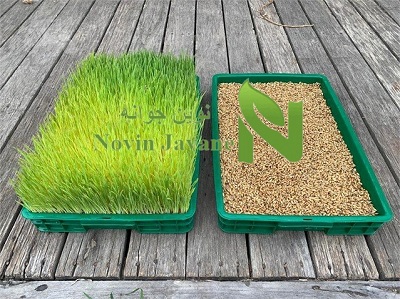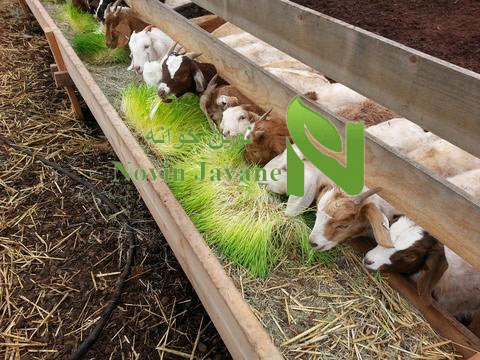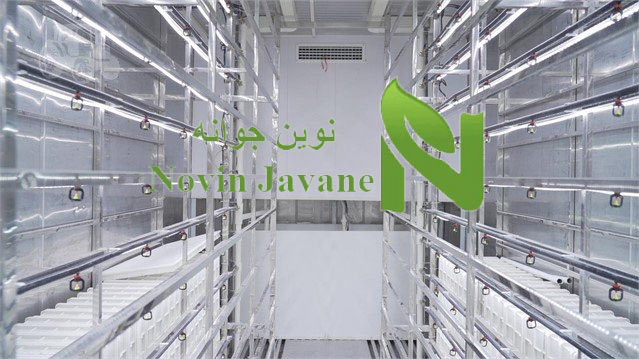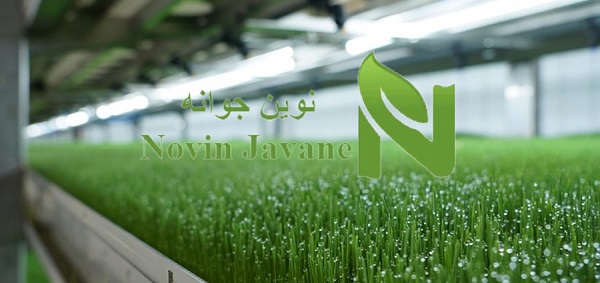Hydroponic fodder
pros | cons of hydroponic forage cultivation for livestock | answering questions
The pros and cons of hydroponic forage cultivation in forage production systems for various livestock such as cattle, sheep, horses and evaluating its efficiency
There have been numerous articles published on the benefits and disadvantages of hydroponic forage cultivation and whether it is good or bad as well as its use for various livestock such as cattle, sheep and horses.
Various prices are also seen on the internet for both the system and the forage. With a little searching on websites, you may come across the statement that hydroponic forage is not cost-effective but it should be noted that these statements are not at all correct and this type of forage can be very suitable for feeding livestock.



Who is hydroponic forage cultivation suitable for?
What does hydroponic mean? Hydroponic means soilless cultivation, which means the plant’s roots are in water and this water can contain nutrient solution. So what is the difference between soil cultivation and hydroponic cultivation?
n soil cultivation, the soil occupies the entire root environment and when you irrigate and fertilize, this solution does not completely engage the roots, but when using the hydroponic cultivation method, due to the liquidity of the water, the entire root will be in contact with the water and as a result, root involvement with the nutrient solution increases.
This means that in hydroponic cultivation you can better and more completely control plant growth, the amount of fertilizer and nutrients required by the plant. That is why hydroponic forage cultivation has fewer disadvantages and more advantages.
That is why in hydroponic cultivation we see improved growth rate, growth quality and plant quality. Using the hydroponic method, many plants can be cultivated including tomatoes, cucumbers, strawberries, vegetables, greens, etc. And forage is one of these plants.
Don’t miss out on watching this video
In fact, hydroponic forage is the same fresh forage found in nature, with the difference that in addition to the green part, the livestock also consumes the germinated seeds. Because the enzymes in the seeds are released during growth, the absorption percentage of forage increases and it becomes more palatable due to its freshness.
Due to the low production costs of forage by this method and the low price per kilo of hydroponic forage and also the release of energy in the seed, it is better not to give the raw seed to the livestock or instead of only consuming straw that has no nutritional value, to put this forage in the livestock’s food chain so that it can also benefit from its nutritional value.
We intend to state that the use of hydroponic forage will be suitable for whom:
Livestock farmers are currently forced to pay high costs to run their farms, while at the same time there is little support in terms of livestock feed supply.
This has caused livestock farmers to face many limitations; especially since we are facing multiple droughts.
The disadvantages mentioned for this type of forage
The first objection that can be made is the moisture content in this forage compared to dry forage, which is about 30 percent dry matter and the remaining 70 percent is moisture.
It should be noted that digestion and absorption of the product will be much better in this case. For example, if we use one kilo of barley seeds for livestock feed, at best 60 percent of it will be digested and absorbed by the animal and the rest will be excreted intact. While if the same seed is cultured hydroponically, then the digestibility and absorbability will increase by at least 70 percent.
With a simple calculation, we can conclude that if at least 6 kilos of forage is obtained from one kilo of seed and considering that 15% of it is dry matter. That means it will have 900 grams of dry matter.
Now let’s calculate how much dry matter is absorbed by the livestock after consuming one kilo of barley seeds in dry form versus one kilo of barley seeds converted to hydroponic forage:
One kilo of dry seeds 60% (maximum absorption by livestock) = 600 grams
One kilogram of seed converted to forage (900 grams of dry matter) × 80% (minimum absorption rate for livestock) = 720 grams
As you can see, the amount of dry matter absorbed by the livestock will be more.
For many livestock farmers, it is important that the diet they use for livestock has the highest efficiency and at the same time is easy for the livestock to digest and is disposed of in smaller amounts.

Hydroponic forage does not have high durability and should be consumed within 2 days.
Solutions:
- The produced forage must be proportional to the number of livestock
- Selling surplus produced forage can be a good source of income.
- In addition, it can be dried and used as a dry ration
Benefits of hydroponic forage
- Water consumption: Water consumption will be reduced by up to 90 percent in this system.
- Healthy diet: No pesticides or herbicides are used in this system, which will lead to higher livestock health.
- Reduced investment: The initial cost may be high but with a simple calculation we realize that 30 hectares of land with adequate water is needed to produce 360 tons of forage. But this issue is completely resolved in the hydroponic forage production system.
- Reduced running costs: Costs including manpower, planting, maintenance, harvesting and agricultural machinery will also be eliminated which will bring more profit.
- Low final cost: In this method, the final cost of produced hydroponic forage will be very low; around 900 Tomans per kilo which is very cost effective.

Hydroponic forage cultivation consulting
To cultivate hydroponic forage and receive training on the construction and commissioning, you can be in touch with us experts every day.
our experts, using the latest methods in the world, provide you with the most appropriate and best solutions in the field of hydroponic forage cultivation.
For more information on hydroponic forage consulting and more information on the pros and cons of a hydroponic forage maker for livestock and whether this product is good or bad, visit the relevant section on the website.
Nutritional analysis of hydroponic forage



Hydroponic forage for sheep
A recent study to evaluate the effect of feeding hydroponic barley sprouts to sheep on dry matter intake, nutrient digestibility, nitrogen balance, rumen fermentation parameters and rumen enzyme activities was performed.
It was found that the digestibility of various nutrients increased by an average of 10% by including sprouted barley. In addition, feeding sprouted barley increased the total number of rumen ciliates by about 31.3% and most rumen enzyme activities
(by 45.0, 9.0 and 23.2% for amylase, cellulase and protease, respectively).
As a result, it was found that feeding hydroponic barley sprouts improves nutrient digestibility, rumen fermentation and rumen enzyme activity. In addition, the use of sprouted barley in the diet of sheep leads to better digestion and fermentation results. Therefore, it can be recommended to combine hydroponic barley sprouts with concentrate to achieve optimal DM utilization as well as high animal performance.
Hydroponic fodder for cows
By including hydroponic forage in the diet of beef cattle, an appropriate average daily weight gain is achieved.
Hydroponic forage is an excellent diet softener as it helps improve palatability and digestibility. This leads to increased feed conversion efficiency.
If you’ve been looking for a way to produce high quality, consistent feed all year round, a forage production system is an excellent solution.
It has been scientifically proven that hydroponic forage has the following advantages:
⭐️ Weight gain improvement
⭐️ Reduced feed consumption.
⭐️ Increased milk production.
⭐️ Health improvement
The high digestibility of fresh hydroponic forage means that the animal needs less food to achieve similar results.
In general, livestock should not digest dry, hard feed to the same extent as fresh, moist feed. Hydroponic forage systems allow them to take advantage of the benefits of fresh forage, which is exactly what their digestive system is designed to do.
Satisfaction of some customers with the device manufacturing and device manufacturing consulting services by our Company
Frequently Asked Questions (FAQ)
Why does livestock sometimes not consume forage?
During forage irrigation, irrigation should not exceed the standard limit, as this will cause forage acidity and its bad smell, and as a result, livestock will not consume it
Why do cultivated forages sometimes not weigh much?
The goal of producing forage by the hydroponic method is to produce a product that is high in nutritional value and palatable; in fact you should be looking for quality not quantity and the weight of forage does not indicate the quality of forage.
After how many days should I harvest the forage?
As mentioned above, harvest the produced forage in 5 to 7 days
So what does forage weight depend on?
The weight of the produced forage depends on the type and quality of the seed, and by using nutrients you can also increase its nutritional quality and as mentioned, the purpose of this type of cultivation is to increase the quality of livestock feed.


داخل اینیستاگرام ما حتما عضو شو تا به همین زودی بهت نحوه ساخت دستگاه هیدروپونیک رو یاد بدیم